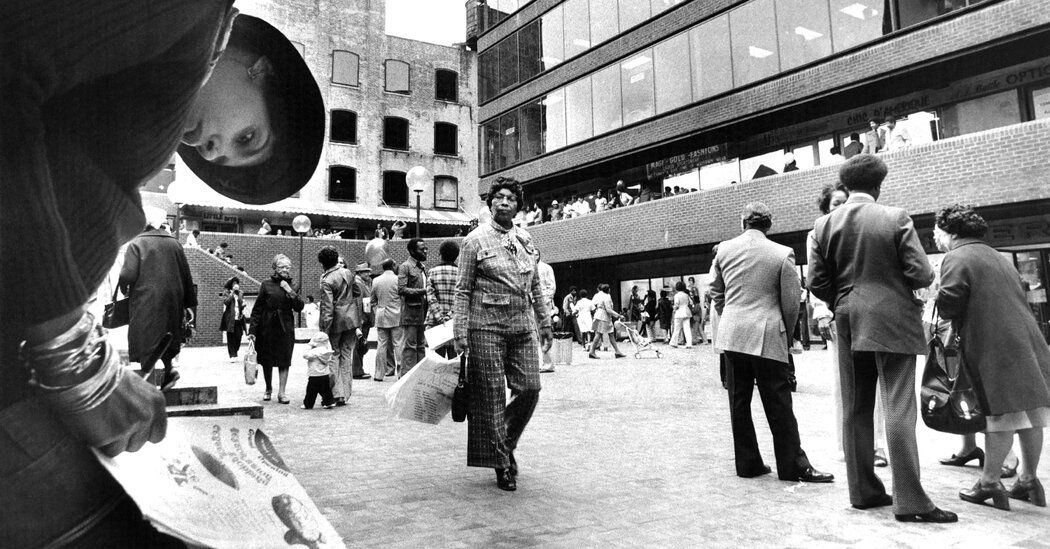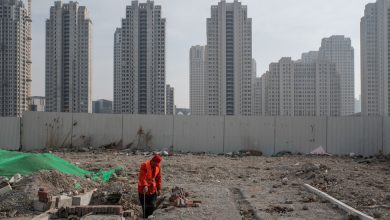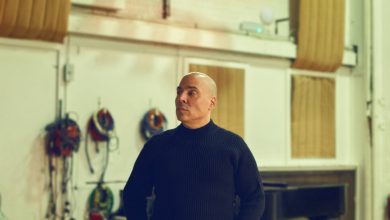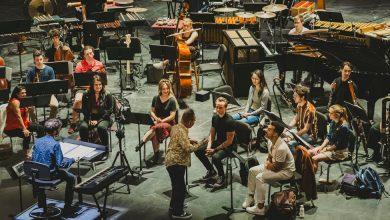
One Solution to the Housing Crisis: Just Make People Rich
In 1966, Robert Kennedy, then the junior senator from New York, turned his attention to the country’s racial frictions and the rupture of urban life, marked by rioting and despair. One freezing day in February, he went to Brooklyn to visit Bedford-Stuyvesant, where schools were falling apart, heroin was everywhere and fathers were not. Community leaders met him with hostility; they were tired of the political gaze, an interest in Bed-Stuy that seemed anthropological rather than practical or solution-oriented. Kennedy was annoyed— telling aides later that he could have just as easily spent his time “smoking a cigar in Palm Beach.” Still, he was deeply affected.
The result was the creation of the Bedford Stuyvesant Restoration Corporation, the first community-development organization in the country, one that pioneered public-private municipal partnerships, becoming a national model for hundreds of similar programs. During its first 10 years, Restoration (as it is universally known) spent $63 million in government, philanthropic and corporate funds to place thousands of local residents in jobs or training programs, build and rehabilitate housing, offer mortgages. It brought art and cultural programming to the area; it opened the Billie Holiday Theater and the first supermarket in a neighborhood with hundreds of thousands of people; and in 1968, it persuaded IBM to develop a computer cable plant that employed thousands of nearby residents.
More than a half-century later, Restoration faces a different set of challenges, the outcome of shifting demographics that have made Bed-Stuy one of the fastest gentrifying ZIP codes in the country. The changes have brought a new chapter of experimentation — one that casts aside some of the mantras and ideologies sacrosanct in progressive circles, accepting the realities of a soaring real-estate market and aiming instead to come at the housing crisis from the labor side.
The truth is that even if manufacturing jobs were still abundant, they would be unlikely to provide salaries that would enable someone to live in a neighborhood where the median rent is $3,200; the cost of a studio apartment has increased 28 percent just since the onset of the pandemic, and brownstones are now selling for several million dollars.
Although the need for affordable housing is paramount in New York, it has tended to dominate the anti-poverty discourse even as high land and construction costs make progress excruciatingly elusive. Of the more than 5,900 apartments constructed in Bed-Stuy during the past decade, only 13 percent were targeted for low-income earners. To put it in the most reductive terms, the thinking within Restoration’s brain trust was that it might simply be easier to make people rich.
On a recent Friday morning, I sat down with a group at the vanguard of Restoration’s reinvention at the organization’s headquarters on Fulton Street, completed in the early 1970s as a bleak fortress meant to convey safety over any sense of aspiration. The complex, known as Restoration Plaza, is on the verge of a massive 10-year renovation and expansion designed by the Ghanian-British architect Sir David Adjaye, a project that will enter the public-hearing stage at the city’s department of planning next week. “I was moved by the history,” Mr. Adjaye told me later when I asked what drew him to the venture, “the idea of making a civic heart; the original project was intended to do that and it succeeded in some ways and didn’t succeed in others.”
At the center of Restoration’s reimagining is a technology training program that has already demonstrated promise. A few years ago, the organization partnered with the Marcy Lab School, a nonprofit developed as an alternative to college with the specific aim of training software engineers. (Despite a recent round of layoffs in the tech sector, software engineers are in high demand across a range of different industries.)
Marcy was founded by two young former teachers, Reuben Ogbonna and Maya Bhattacharjee-Marcantonio, both the children of immigrant families, who had observed that not every student they taught was suited for college. Raising money from corporate donors and philanthropies, they are providing free intensive education programs to fellows in a loft space overlooking the harbor, in Industry City in Brooklyn. The goal is to simulate a sense of community that students would get from a traditional college experience.
Two years ago, a cohort of fellows went through the 12-week program with sponsorship from Restoration that provided additional support to students in the form of financial and mental-health counseling as well as networking. Nineteen of the 20 fellows, all low-income students of color graduated into jobs with average starting salaries of $107,000, apart from benefits, bonuses and stock options. Admission to the program did not require the disclosure of grades or transcripts but rather a demonstrated passion for technology. The plan is to relocate the program to Restoration Plaza when it is completed. Lining the wall of a conference room in Industry City are portraits of graduates, one of whom, Ms. Bhattacharjee-Marcantonio told me, had already been promoted several times and has bought a Tesla; another had put a down payment on a multifamily house in Queens. They were in their 20s.
Yemisi Onayemi had been studying at New York City College of Technology, part of the city’s public university system, when she eventually entered the Marcy program. She had gone on job interviews at places like Google and Tumblr, but the curriculum at her school was weak, she said, and she was competing with people from prestigious places like Carnegie Mellon and Georgia Tech. A report from the Center for an Urban Future that appeared late last year revealed that half of CUNY computer science graduates did not have a job in their field a year after graduation. Fewer than 21 percent of tech workers in the city are Black or Hispanic.
“Nothing was working out, and it led to a depression,’’ Ms. Onayemi said, recounting her initial experiences on the job market. “I maxed out my credit cards and had to go back to restaurant work.” She had been staying with a friend who said she had to leave. After the Marcy program, which she credits with building her confidence and ability to better manage the interview process, she got a job at JP Morgan with a $110,000 salary and a signing bonus. After she was hired, she rented an apartment in Bed-Stuy.
“It was Colvin who was really obsessed with this idea of wealth creation,” Alan Fishman, an important investment partner and adviser at Restoration told me. Colvin Grannum ran Restoration for 20 years, and though he recently left the institution, he continues to play a critical role in its redevelopment. A native of Bed-Stuy who later graduated from the University of Pennsylvania and Georgetown’s law school, Mr. Grannum had in mind the kind of economic empowerment agenda that went beyond funneling people into jobs that gave them $50,000 a year — survival without the prospect of success. There was an enormous difference, he believed, in a life spent getting by versus one anchored in the security of having several thousand dollars in savings for emergencies.
His successor, Blondel Pinnock, will have to shepherd Restoration’s next phase through the various approval processes. The city has committed $50 million to the project, but much of the financing relies on filling ground floor retail space and drawing tenants to fill offices who will pay market rents and help mentor local talent. The development will have cultural space, social space, incubator space, pop-up space for local entrepreneurs. The hope is that by the time the project is finished, the reluctance of many workers to go to the office will have dissipated, and that young people living in Bushwick or Crown Heights or Bed-Stuy itself will be happy to go to work so close to where they live.
Still, change at this scale, particularly when it includes the construction of taller buildings, will inevitably draw opposition, even when, as in this instance, residents have been given the chance to talk about what they wanted. Over and over, it was clear that people hoped for good jobs and new opportunities, Ms. Pinnock said. “We’re holding true to what the community wants.”




